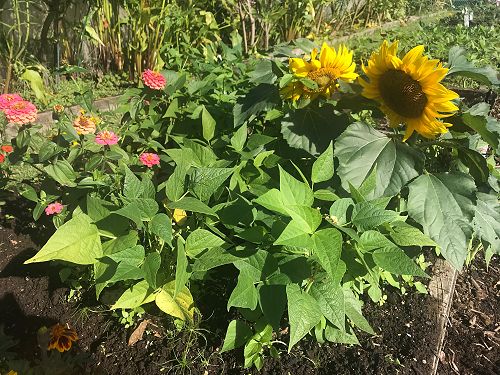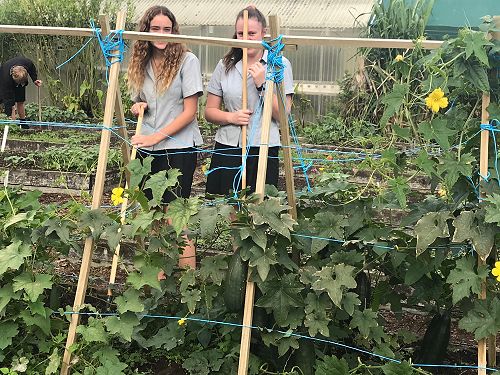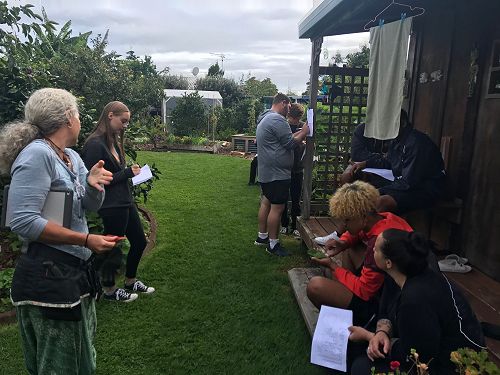
Innovative Horticulture update
There are now 99 students from Years 11, 12 and 13 enrolled in Innovative Horticulture, and with our personalised modular learning programme plenty is going on.
Level 1 students have been learning about seeds, germination and propagation methods, soil properties, geographical distribution of horticultural production, landscaping design, as well as hands-on practical skills. They have some fine looking garden plots still producing beans, lettuces and a host of flowers to attract pollinators, including dwarf sunflowers.
In Level 2 some students have undertaken investigations into how leaf area affects root formation on cuttings. Some are looking at how we could control the invasive Brown Marmorated Stink Bug with a parasite, the Samurai wasp, others extending their landscaping skills or monitoring germination, emergence and growth. By the end of the semester, other topics explored will have included Sustainability and a start will have been made on advanced propagation techniques. Monique and Maia have some loofah vines growing up a trellis. We are watching with interest to see if they wither up into dried exfoliating "sponges" as researched, and think we might be just about there.
The Level 3 class has divided itself into two groups according to interest. One group has investigated how value is added along the Zespri value chain through innovation. This included a visit to Birchwood Packhouse and Zespri International's boardroom for a session with the Innovation team. Another recently completed Agribusiness paper focussed on investigating, through lots of data, the profitability of the kiwifruit industry. We move on next to avocados and pests. The second group of Level 3 students are focussed on the life cycles of different plants as well as their uses and cultivation. They visited the Katikati Bird Gardens to observe and identify amenity plants and were hosted by local Jizzy Green to explore her permaculture garden and how it produces such a wealth of food.
Gallery







